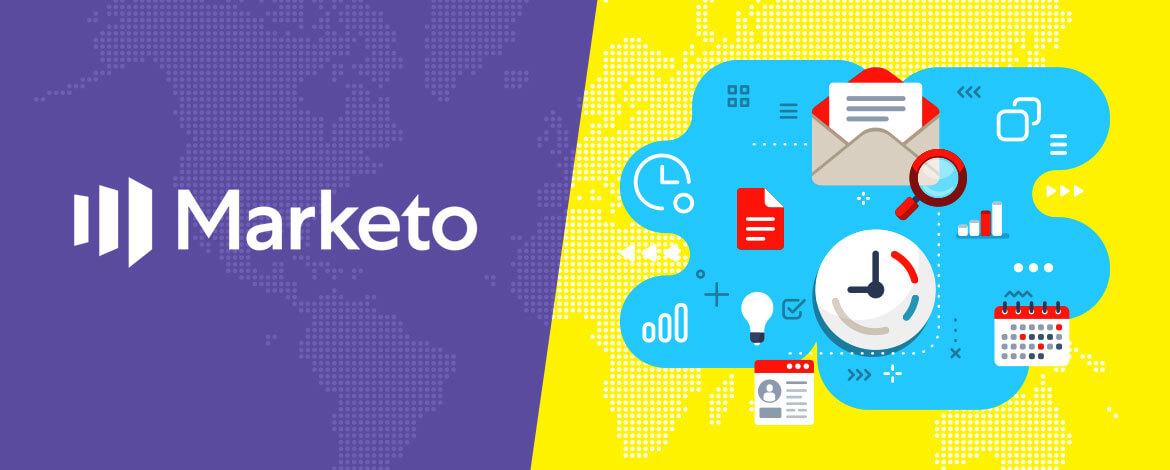Most businesses have to send the same email to several subscribers based in different countries. While these countries would be having different time zones, it can be exhausting to create multiple email programs for all the diverse segments in your list.
Suppose you schedule an email for 10 AM PST on Monday. This email would reach the subscribers based in Canberra, Australia at 3 AM on the next day (Tuesday) while UK subscribers would receive it at 6 PM on Monday.
According to the graph shown below, subscribers are most likely to read your email at 10 AM when they have arrived at work, or at 1 PM after they are done with their lunch. The open rate gradually declines after 3 PM. These figures make it evident that timing plays a crucial role when it comes to email marketing success.
If you are a Marketo user, you can heave a sigh of relief because Marketo offers the users with a “recipient time zone send” feature. With the help of this feature, Marketo calculates the time zone according to the subscriber’s City, State, Country, or Zip Code. In case the tool is not able to identify the time zone with the help of these variables, it considers the Inferred City, Inferred State, Inferred Country, and Inferred Zip Code fields. Inferred data refers to the information that is set on the reverse IP lookup according to the first website visit. If the time zone still remains unidentified, the subscriber will not be assigned a time zone and they will qualify for the program on the basis of the subscription time zone. (Subscription time zone refers to the default location and time zone settings for a subscription set by the admin.)
Moreover, Marketo checks the explicitly stated values first for the time zone calculation, which means that they automatically recalculate the time zone in case one of these explicitly stated field values changes. Consequently, you can modify the time zone that is stored in the Person Time Zone field by changing the values in the explicit fields, namely City, State, Country, and Zip Code.
For instance: If a subscriber resides in Raleigh, North Carolina, but they are going to be in Las Vegas during the time you send the Christmas email, you can recalculate their time zone to Pacific Time Zone.
In case the database has recorded only Country or only State, the tool will pick the middle time zone for countries with three or fewer time zones. It will pick the earliest of the time zone if the states have two time zones. In case, this combination does not work and the tool fails to determine a subscriber’s time zone, it will deliver the email according to the Marketo subscription time zone, as mentioned earlier.
As an example: If you have scheduled your email for 9:00am EST, people who have no assigned time zone will receive the email at the same time.
To make sure that recipient time zone works well for you, you should start running the email program in the first or earliest time zone in the world (UTC + 14:00). It is recommended that you schedule the first cast at least 25 hours in the future. In other words, you should allow 24 hours + some time to start the campaign since people may belong to diverse time zones all over the world.
This feature is highly recommended in order to enhance your subscriber engagement. For marketers who are sending single email blasts, recipient time zone sending in Marketo will amp up the open rates and ROI. However, it has some limitations when compared to true send time optimization or personalization.
Let’s discuss how it compares to the latter.
I am sure you would agree that every list is different and while the ideal time for sending an email might be 10 AM, it would not necessarily apply to every subscriber. There could be people who would choose to respond on weekends, after 6 PM, or later at night. To cater to these subscribers, you would need send time personalization.
Send time personalization creates a profile for every email address taking into consideration their previous engagement and interactions. It does not need any location data or zip code. If you want to incorporate this tactic in your email strategy, you can integrate a machine learning system with Marketo. This will allow you to overcome the challenge posed by unreliable data of Inferred time zone recorded for subscribers using VPN servers.
Wrapping Up
Email fatigue is REAL and if you don’t want it to hamper your email marketing efforts, you ought to send out the emails at the right time that matches the subscriber’s time zone. It will ensure good open rates while optimizing the conversion rate as well.
Have you used this exciting feature of Marketo? Do let us know in the comments below.
If you need help with Marketo, we have Marketo Certified Professionals to make things easy for you.







Kevin George
Latest posts by Kevin George (see all)
Salesforce Marketing Cloud March 2020 release: Your guide to all the important features
Making use of Analytics to Create Effective Email Campaigns